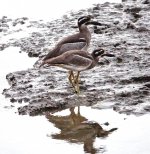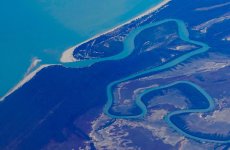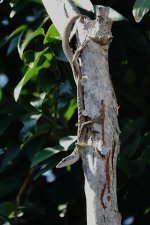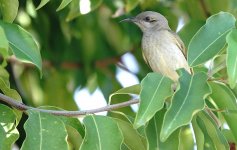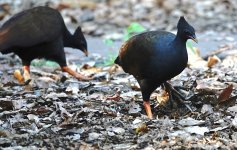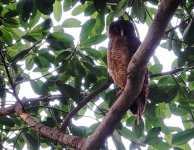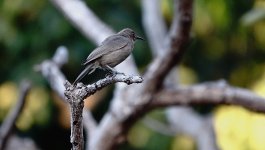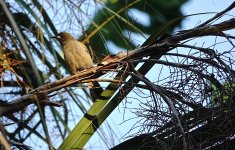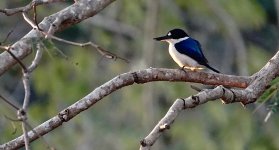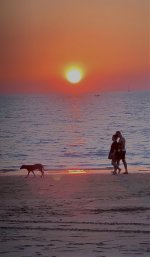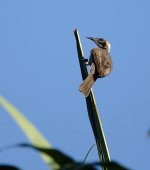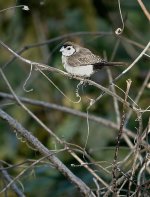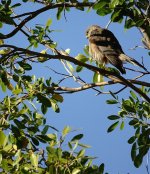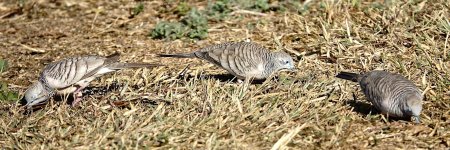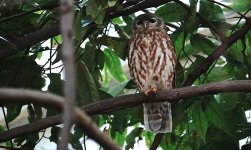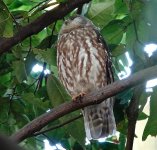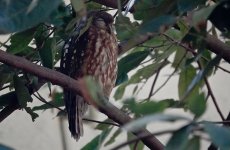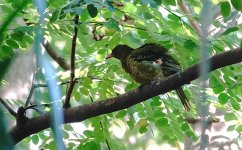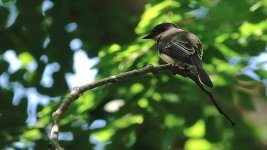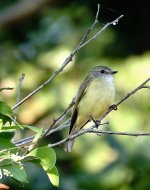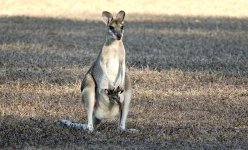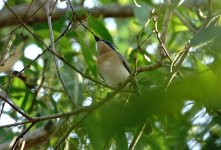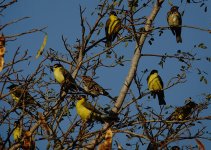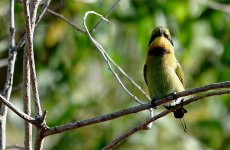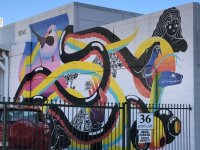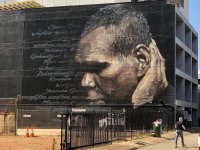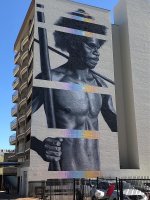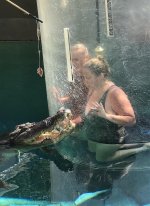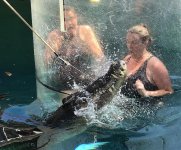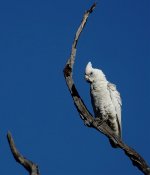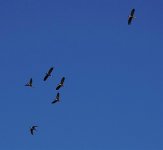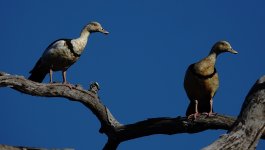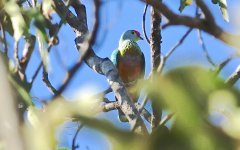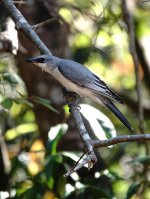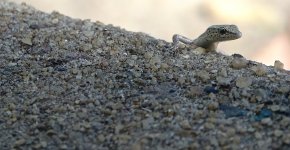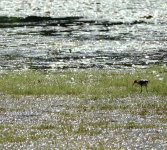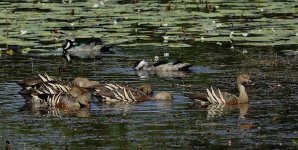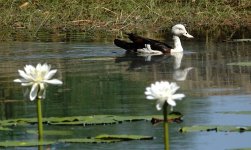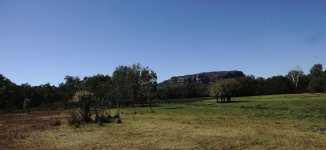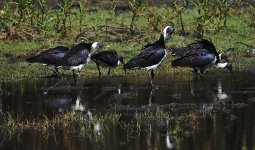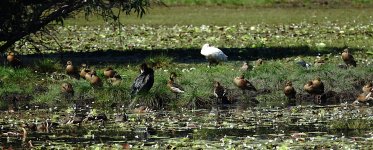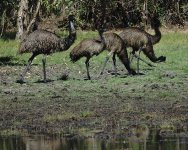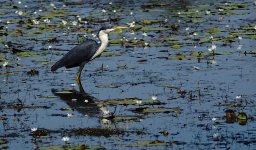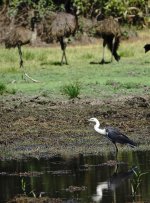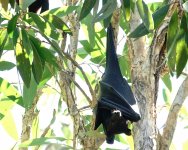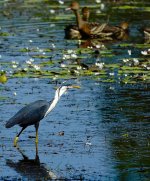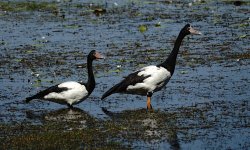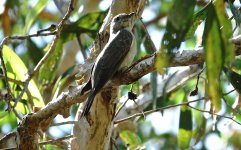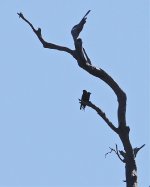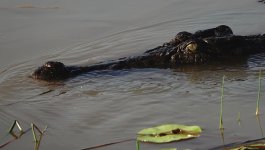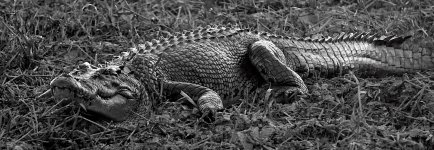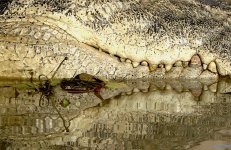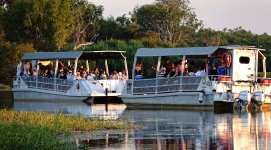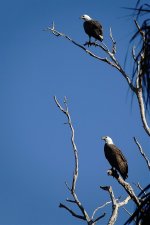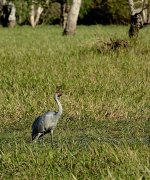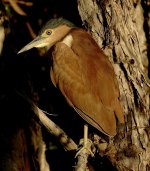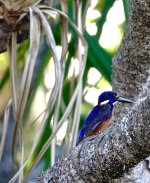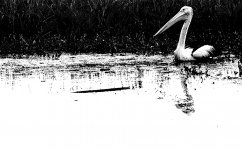MKinHK
Mike Kilburn

5th July – Cairns Esplanade
After an early arrival into a beautifully sunny Cairns after a dirt-cheap red-eye from Shenzhen we had to wait a few hours to check into our hotel overlooking the famous Esplanade, after picking up some cheap imports in the shape of House Sparrows, Common Mynas and Feral Pigeons at the airport, plus a dozen Pacific Black Ducks in a drainage channel between the runway and the apron and 20 Cattle Egrets on a riverbank just beyond the airfield.
July is exactly the wrong time to be there, with a tiny handful of the thousands of palearctic waders that spend the northern winter here showing on the mudflat as we walked along the boardwalk to find brunch. These included a dozen or so Whimbrel, an Eastern Curlew, and a Black-tailed Godwit. Local waders included a solitary Pied Oystercatcher, four Black-winged Stilts and half-a-dozen or so Masked Lapwings. The mudflats and bay also held twenty-odd macrotarsa Gull-billed Terns and a solitary Caspian Tern, plus thirty-odd Silver Gulls, a dozen ever-wonderful Australian Pelicans, a couple of Reef Egrets (looking rather paler than their counterparts in Hong Kong, a Great Egret and a solitary Intermediate Egret. An adult White-bellied Sea Eagle soaring over the water added some class and, best of the lot, an Eastern Osprey stooped and caught a fish - the first time I’ve actually seen this in 30–odd years of birding.
The Australians do a wonderful job at creating public open spaces that provide opportunities for recreation and wildlife and also look stunning. Having visited a few cities in Australia Cairns looks like the best of the lot. Birds seen on the walk to brunch included lots of Rainbow Lorikeets, Bar-shouldered Doves, four typically hyperactive Willie Wagtails, several piebald Magpie Larks, a Straw-necked Ibis and thirty-odd Australian Swiftlets - my first lifer of the trip. I also enjoyed pishing in a couple of Olive-backed Sunbirds and my first honeyeater of the trip – a very curious Brown Honeyeater – small, fawn-coloured with a hint of a green wing panel. Also noteworthy was a large colony of Spectacled Flying Foxes in front of Cairns Library, which also held a bonus Australian Figbird.
Less attractive were a street gang of Feral Pigeons that swooped in to scavenge the leftovers on the next table. If the coffee shop were to served pigeon this would be a great circular economy solution to reducing food waste. Currently its just disgusting!
The last bird of the day, standing guard in the sand under the lights by the public pool on the Esplanade was a Bush Thick-knee – one of my favourite Australian birds, which I was able to snap with the iPhone from just a few feet away.
Cheers
Mike
After an early arrival into a beautifully sunny Cairns after a dirt-cheap red-eye from Shenzhen we had to wait a few hours to check into our hotel overlooking the famous Esplanade, after picking up some cheap imports in the shape of House Sparrows, Common Mynas and Feral Pigeons at the airport, plus a dozen Pacific Black Ducks in a drainage channel between the runway and the apron and 20 Cattle Egrets on a riverbank just beyond the airfield.
July is exactly the wrong time to be there, with a tiny handful of the thousands of palearctic waders that spend the northern winter here showing on the mudflat as we walked along the boardwalk to find brunch. These included a dozen or so Whimbrel, an Eastern Curlew, and a Black-tailed Godwit. Local waders included a solitary Pied Oystercatcher, four Black-winged Stilts and half-a-dozen or so Masked Lapwings. The mudflats and bay also held twenty-odd macrotarsa Gull-billed Terns and a solitary Caspian Tern, plus thirty-odd Silver Gulls, a dozen ever-wonderful Australian Pelicans, a couple of Reef Egrets (looking rather paler than their counterparts in Hong Kong, a Great Egret and a solitary Intermediate Egret. An adult White-bellied Sea Eagle soaring over the water added some class and, best of the lot, an Eastern Osprey stooped and caught a fish - the first time I’ve actually seen this in 30–odd years of birding.
The Australians do a wonderful job at creating public open spaces that provide opportunities for recreation and wildlife and also look stunning. Having visited a few cities in Australia Cairns looks like the best of the lot. Birds seen on the walk to brunch included lots of Rainbow Lorikeets, Bar-shouldered Doves, four typically hyperactive Willie Wagtails, several piebald Magpie Larks, a Straw-necked Ibis and thirty-odd Australian Swiftlets - my first lifer of the trip. I also enjoyed pishing in a couple of Olive-backed Sunbirds and my first honeyeater of the trip – a very curious Brown Honeyeater – small, fawn-coloured with a hint of a green wing panel. Also noteworthy was a large colony of Spectacled Flying Foxes in front of Cairns Library, which also held a bonus Australian Figbird.
Less attractive were a street gang of Feral Pigeons that swooped in to scavenge the leftovers on the next table. If the coffee shop were to served pigeon this would be a great circular economy solution to reducing food waste. Currently its just disgusting!
The last bird of the day, standing guard in the sand under the lights by the public pool on the Esplanade was a Bush Thick-knee – one of my favourite Australian birds, which I was able to snap with the iPhone from just a few feet away.
Cheers
Mike
Attachments
-
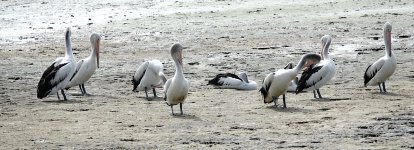 DSC05627 Australian Pelicans @ Cairns.jpg478.5 KB · Views: 50
DSC05627 Australian Pelicans @ Cairns.jpg478.5 KB · Views: 50 -
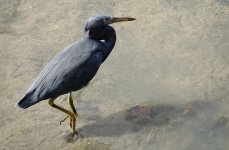 DSC05628 Pacific Reef Egret @ Cairns.jpg340.1 KB · Views: 48
DSC05628 Pacific Reef Egret @ Cairns.jpg340.1 KB · Views: 48 -
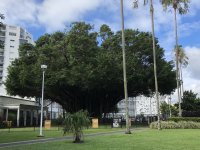 IMG_9047 Spectacled Flying Fox Roost @ Cairns.JPG651.8 KB · Views: 52
IMG_9047 Spectacled Flying Fox Roost @ Cairns.JPG651.8 KB · Views: 52 -
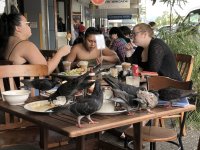 IMG_4283 Feral Pigeon clean up crew @ Cairns.JPG558.1 KB · Views: 92
IMG_4283 Feral Pigeon clean up crew @ Cairns.JPG558.1 KB · Views: 92 -
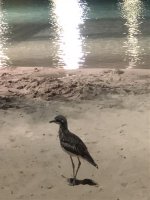 IMG_8015 Bush Thick-knee @ Cairns.jpg132.2 KB · Views: 63
IMG_8015 Bush Thick-knee @ Cairns.jpg132.2 KB · Views: 63







